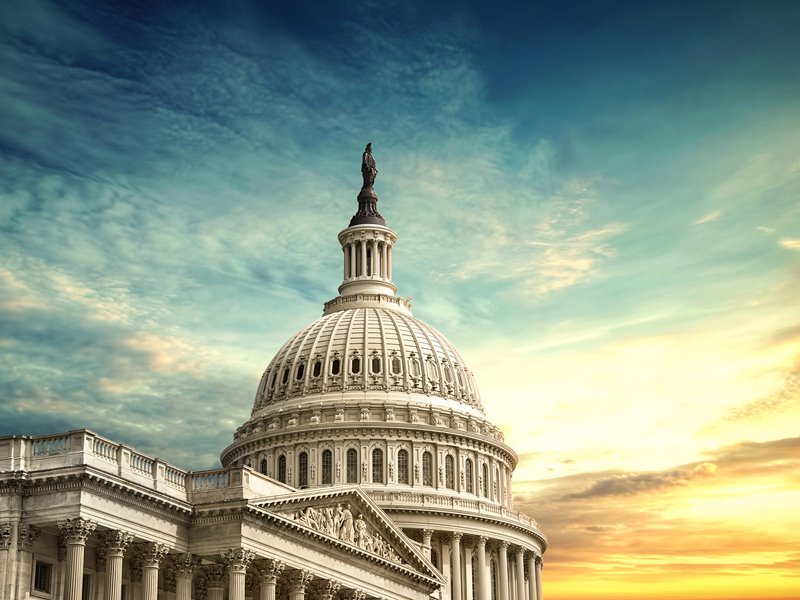Climate Change - State and Local Governments Step Up

Author: Alliant
- a reduction of the country’s gross domestic product (GDP) (economic output) by 10% by the end of the century, or annual revenue loses to the federal budget of 7.1% or $2 trillion. In 2022, the entire White House proposed budget for the federal government was $5.8 trillion.
- an increase in the costs of the 6 types of federal disaster related aid programs (insurance and post disaster aid) anywhere from $25 billion to $128 billion by the end of the century, with annual hurricane-related disaster response costs alone amounting to as much as $94 billion annually.
- an inability to quantify the costs of climate risk such as changes to ecosystems and infrastructure expenditures, but analysis nevertheless predicting that the cost to public health and businesses “will be larger than the impact on our fiscal balance sheet.”

According to a scorecard developed by RMI, a U.S. clean energy think tank, some states are already playing the role of climate leaders by championing “the investments and polices that will define climate leadership in the coming years and benefit public health, the economy, and emissions reductions in the decisive decade leading to 2030.”xii The scorecardxiii identifies 6 front runner states that are focusing on clean electricity, building electrification, and electric vehicle transition, among other initiatives. Those states are Colorado, California, Illinois, New Jersey, New York, and Washington. Together these 6 states represent approximately 1/5 of total U.S. emissions, and if successful in their plans, can reduce carbon emissions by close to 200 million tons by 2030.
In Colorado, for example, the legislature has passed more than 50 climate related laws since 2019. In 2019, the state’s governor ran and won election to office on a platform of Colorado becoming a 100% clean energy state by 2040. The most significant of the 2019 climate bills passed in Colorado is HB 126, which calls for the state to reduce emissions 90% below 2005 levels by 2050.xiv This law was passed by an array of interests working together. Among them were representatives of the oil and gas industry workers’ unions. One of the key compromises that proved pivotal in passing the law was the creation of the Office of Just Transition that helps these workers find new jobs with an appropriation of $15 million in funding to support these efforts. The state’s largest electricity providers also supported the law and plan to close their last coal plants by 2030. Also instrumental in passing the bill was an agreement that incentivizes utilities to reduce their carbon emissions 80% by 2030 in exchange for a commitment not to further regulate 2030 emissions if they meet this goal.
In many cities and towns across the country, similar progress is being made. In the local government setting, it is often possible to remove partisan politics from the discussion of climate change and reach consensus. In the small town of Morris, Minnesota, for example, population 5000, traditional left and right leaning interests came together to agree on the Morris Model, an initiative that calls for reduced energy consumption of 30% by 2030, production of 80% of the county’s electricity by 2030 from renewable sources and the elimination of landfill waste by 2025.xv According to the city manager, what guided the city and won support for the action were obvious benefits of lower energy costs and increased local economic activity due to locally produced power such as solar panels on the Morris community center, library, liquor store and city hall, electric vehicle charging stations and a composting program in progress.
In Phoenix, Arizona, heat and automobiles are ubiquitous. In 2021, to address climate change, the city focused on electric vehicle adoption and heat wave mitigation by allocating $6 million to plant trees, to install 40 miles of cool pavement lowering evening temperatures and to add 280,000 electric vehicles to city roads by 2030. The city developed the plan by bringing together government officials, representatives of the utility industry, auto manufacturers and environmental justice groups.xvi
In Athens, Ohio, in 2018, 76% of voters supported a program for residents to pay a carbon fee of 0.2 cents per kilowatt-hour of electricity use. The program generated $100,00 in annual revenue for renewable projects. Now, Athens’ greenhouse gas emissions are among the lowest in the state per capita.xvii
With limited reach, authority and funding, separate state and local actions are no substitute for a coordinated national strategy to address the alarming and growing problem of carbon emissions which are causing the increased number of climate disasters we are facing. However, states and local communities are leading nonetheless, and it is making a difference. In the future, state and local government success stories may eventually motivate the federal government to reach consensus and bring to bear the necessary power and commitment to avoid climate disaster in the future.
[i] https://www.ncei.noaa.gov/access/billions/events/US/2022?disasters%5B%5D=all-disasters/
[ii] https://www.ncei.noaa.gov/access/billions/events/US/2022?disasters%5B%5D=all-disasters.
[iii] https://www.ncei.noaa.gov/access/billions/events/US/2022?disasters%5B%5D=all-disasters.
[iv] https://www.ncei.noaa.gov/access/billions/events/US/2022?disasters%5B%5D=all-disasters.
[v] https://www.ncei.noaa.gov/access/billions/events/US/2022?disasters%5B%5D=all-disasters.
[vi] https://www.iii.org/fact-statistic/facts-statistics-global-catastrophes.
[vii] https://www.iii.org/fact-statistic/facts-statistics-global-catastrophes.
[viii] https://www.whitehouse.gov/wp-content/uploads/2022/04/OMB_Climate_Risk_Exposure_2022.pdf.
[xi] https://www.supremecourt.gov/opinions/21pdf/20-1530_n758.pdf.
[xii] https://rmi.org/climate-goals-states-are-setting-for-others-to-follow/.
[xiii] https://statescorecard.rmi.org/.
[xiv] https://leg.colorado.gov/bills/hb19-1261.
[xv] https://www.morrismodel.org/.
[xvi] https://www.phoenix.gov/streets/coolpavement; https://www.phoenix.gov/sustainability/electric-vehicles.
[xvii] https://www.athensnews.com/news/election/athens-lives-up-to-its-rep-easily-passing-carbon-fee/article_ab820970-53ac-11e8-9a57-eb5db91b9c51.html; https://www.sopec-oh.gov/rates/athens.